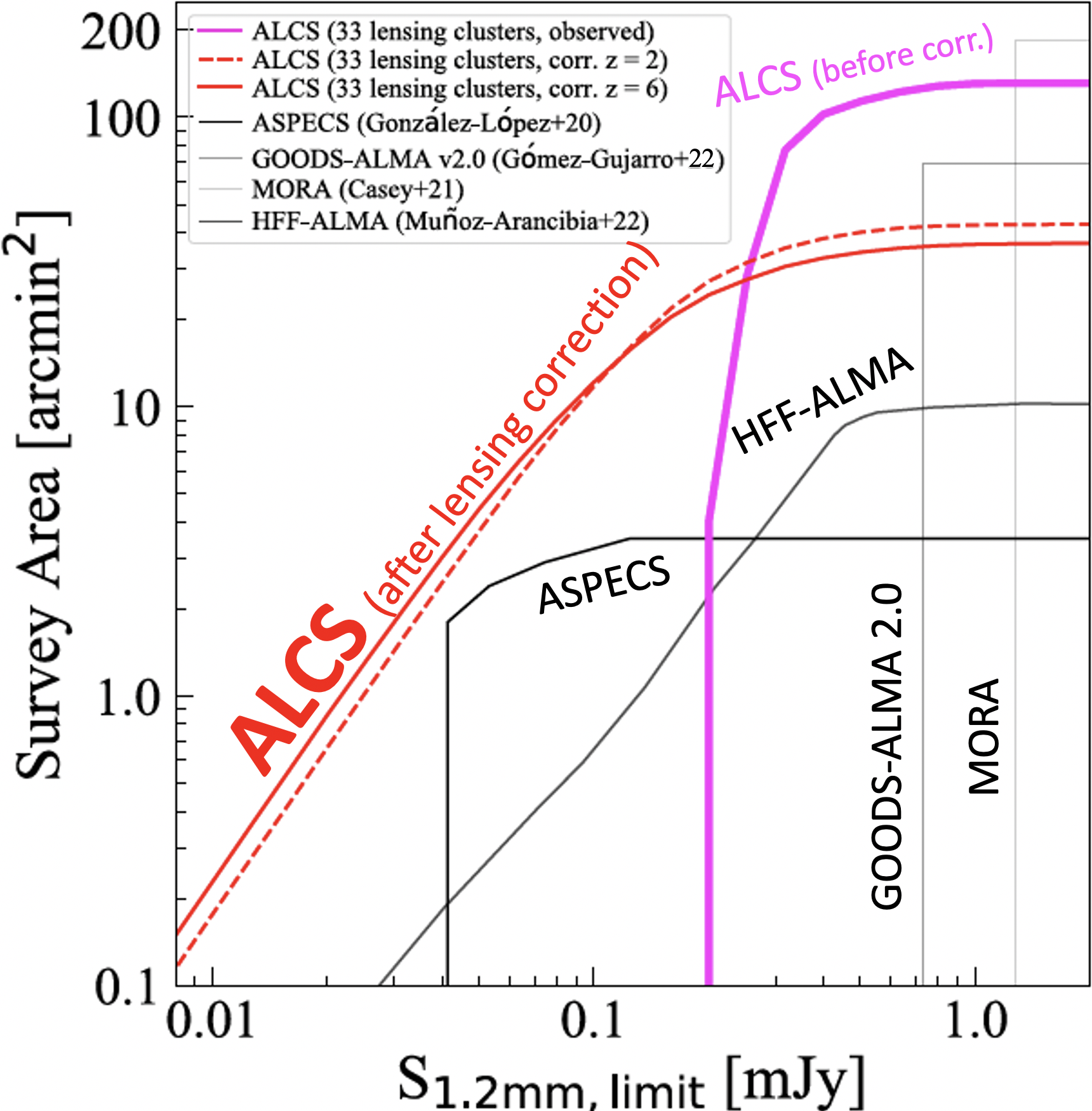ALMA Lensing Cluster Survey (ALCS) is a 95-hr ALMA cycle-6 large program (2018.1.00035.L) aiming at unbiased search for lensed (i.e., apparently but intrinsically faint) dusty galaxies in the high magnification regions of 33 massive galaxy clusters selected from HST/Spitzer treasurly programs CLASH, HFF, and RELICS. ALMA-HFF data have also been combined (2013.1.00999.S and 2015.1.01425.S). With an average continuum sensitivity of 63 uJy (1 sigma) at 1.2 mm, the total survey area reaches 131 arcmin2. Two frequency setups result in ~15 GHz coverage in total, allowing us to blindly uncover millimeter-wave line emitters from the 3-dimensional cubes. Rich ancillary data taken from HST, Spitzer, Herschel, Chandra and so on have been exploited to characterize the ALMA detected galaxies and to uncover obscured galaxies those are missed in the deep HST images. Some representative examples can be found in the figure below.

Figure 1. ALMA 1.2 mm continuum image of one of the ALCS fields (left) along with the HST near-infrared 1.6 um (WFC3/F160W) and Spitzer/IRAC 3.6 um (ch1) images. Green circles indicate the positions of ALMA 1.2 mm continuum sources, and yellow contours show the critical curves at z = 4 (mass model: Oguri et al. using Glafic). Taken from Kohno et al. (in press.)
ALCS will exploit the gravitational lensing as a natural telescope in space to capture intrinsically faint but apparently bright dusty galaxies. Previous ALMA observations uncover faint (sub)millimeter-selected galaxies, which are significantly fainter than the classically known bright submillimeter galaxies (SMGs), and such faint (sub)millimeter-sources are found to be a major contributor to the cosmic extragalactic background light (CIB). Their nature is not yet fully explored due to its faintness. The gravitationally amplified (and intrinsically faint) dusty galaxies detected in ALCS will provide ideal laboratories for the detailed studies of such faint (sub)millimeter-selected galaxy population.

Figure 2. Deep continuum imaging surveys of galaxies using ALMA Band-6 as a function of the survey area and survey depth, illustrating that ALCS shares a unique parameter space among the existing ALMA deep surveys by exploiting the gravitational lensing. Taken from Fujimoto et al., submitted to ApJS (arXiv:2303.01658).